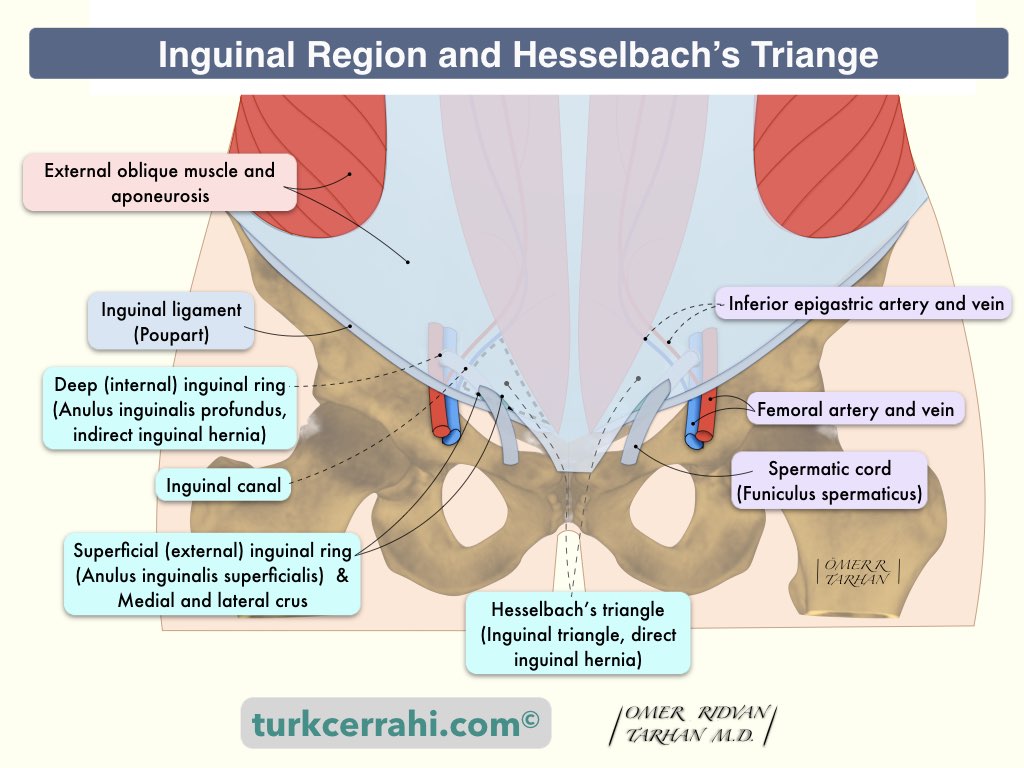Direct Inguinal Hernia
The direct inguinal hernia arises from Hesselbach’s triangle. The term “direct” refers to the fact that the hernia protrudes directly through the abdominal wall, bypassing the inguinal canal. In contrast, an indirect inguinal hernia protrudes through the inguinal canal from the abdominal cavity (internal ring > inguinal canal > external ring). Therefore, as indirect inguinal hernias grow larger, they may descend into the scrotum, whereas direct inguinal hernias do not.

Hesselbach’s triangle is defined by the following boundaries:
- The inguinal ligament inferiorly
- The inferior epigastric artery laterally
- The lateral border of the rectus abdominis muscle medially
In other words, a direct inguinal hernia arises medially to the inferior epigastric artery.
Men are ten times more likely to develop direct inguinal hernias than women. As the abdominal wall weakens with age, middle-aged and elderly individuals are more likely to develop direct hernias.
The etiology of direct inguinal hernias involves increased intra-abdominal pressure caused by factors such as straining to urinate due to prostate enlargement, chronic coughing, obesity, heavy lifting, etc.
The treatment for direct inguinal hernias is surgery.
A pantaloon hernia refers to a type of inguinal hernia where the patient has both a direct inguinal hernia and an indirect inguinal hernia on the same side of the body, with the inferior epigastric artery located between them. This type of hernia is named “pantaloon” because the hernias resemble the legs of pants, and the inferior epigastric artery resembles the waistband of pants.
« Return to Dictionary